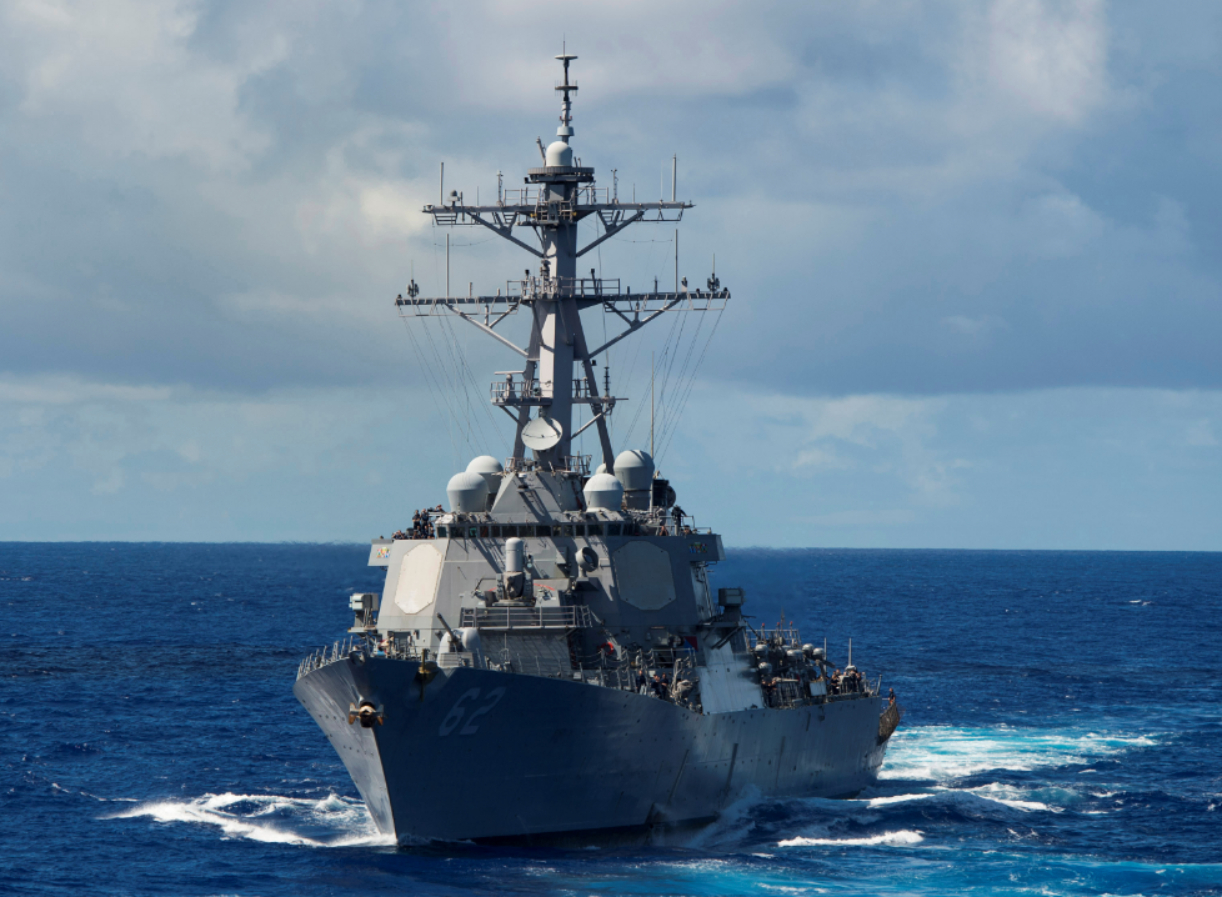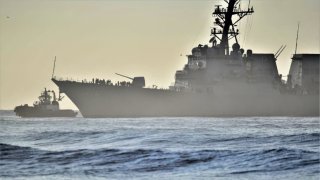The U.S. Navy Has a Laser Weapons Problem It Can't Solve
The U.S. Navy's investment in Directed Energy Weapons (DEW) like the HELIOS laser system reflects its urgent need for advanced defense against evolving threats such as hypersonic missiles and drone swarms.
Summary and Key Points: The U.S. Navy's investment in Directed Energy Weapons (DEW) like the HELIOS laser system reflects its urgent need for advanced defense against evolving threats such as hypersonic missiles and drone swarms.

-Despite decades of research and significant funding, these systems are still under development, with the Navy facing challenges in integrating DEWs into existing platforms like the Arleigh Burke-class destroyers.
-Waiting for the DDG(X) warships to be built for DEW deployment could be a strategic error, and the Navy should focus on integrating these technologies into current systems and unmanned platforms.
The U.S. Navy's Laser Drama Show
For almost 20 years, the U.S. Navy (as well as the Air Force) has worked on various concepts for directed energy weapons (DEW), or lasers.
Gobs of U.S. tax dollars have been spent on the technology, and many promises have been made by the military. And, as U.S. Navy Adm. Fred Pyle told reporters earlier this summer, “Sometimes [the Navy has] a tendency to over promise and under deliver.”
That is an understatement.
To be clear: The U.S. military needs to possess a reliable and robust DEW capability. The reason it has lacked this capacity is not because the technology is not there yet. It surely is. But there has been a lack of direction, funding, and initiative over the course of many decades on this technology.
As Adm. Pyle had to admit, the Navy needs these weapons more now than ever.
China is ascendant. Russia is resurgent. Iran appears poised to upend the U.S.-led Mideast order. Latin America is aflame as Venezuela implodes. And North Korea is, well, who really knows these days?
The Flaws of Directed Energy Weapons (DEW)
Pyle wants the Navy to concentrate on developing DEW for surface warfare purposes. He’s right to fixate on that like a laser. That’s because America’s enemies are overcoming the strategic advantages that ballistic missile defense (BMD) and other missile defense systems have conferred upon the countries employing these capabilities. Israel’s Iron Dome, for example, has allowed for that country to mitigate what could be catastrophic damage from Hamas, Hezbollah, and Houthi rockets fired at the country.
Similarly, U.S. Navy warships employ a coterie of systems meant to defend against incoming missiles. This allows for those Navy warships to operate with relative impunity near enemy shores while knocking those enemies around with their offensive systems.
But these times, they are a-changin’, as Dylan warned us so long ago.
Ultimately, conventional ballistic missile defenses run out of ammunition with which to fire at incoming rockets and missiles. These systems can be overwhelmed by swarming tactics that fast-moving drones and modern anti-ship ballistic missiles employ.
What’s more, hypersonic weapons completely circumvent the ability of conventional missile defenses to protect the ship or territory they are charged with defending.
So a U.S. aircraft carrier and its attendant battle group could soon be in the unenviable position of its defensive systems either being totally overwhelmed in the early phase of a conflict – or they will be rendered obsolete with a small batch of hypersonic weapons systems. Sure, the Americans are always building better systems. The Pentagon is supposedly prioritizing the creation of hypersonic weapons of their own, as well as defenses against them.
Sadly, for now, China and Russia have the Americans beat in this domain.
Making DEW or Lasers Work
That leaves the U.S. military with a limited set of options in the near term. That’s where DEW comes. If the American military can make DEW work reliably – and scale it up – it’s an additional layer of defense for U.S. surface warships or bases that could overwhelm the swarming tactics that America’s enemies are preparing to deploy against U.S. assets in war.
There are two DEW systems the Navy is investing in. The first is the High-Energy Laser with Integrated Optical-Dazzler and Surveillance system (HELIOS). Navy leaders claim that the system can “blast more than 60 kilowatts of directed energy at targets up to five miles away,” and these systems were being tested on Flight IIA Arleigh Burke-class destroyers.
As if trying to justify the cost of such systems, the Navy is trying to marry these new innovations to a platform that has yet to materialize: the replacement for the Navy’s Ticonderoga-class destroyers, the mythical DDG(X) warship. Whatever the Navy says about the timelines for the DDG(X), it is all up in the air, as the US economy struggles, politicians are distracted, and America’s industrial base is all but broken.
The Navy Should Not Hold Out for the DDG(X) Program
Hoping and waiting for the DDG(X) to be delivered in any meaningful numbers so that they can utilize the Navy’s lasers is strategic malpractice on the part of American war planners.

Of course, the Navy needs DEW to ensure its surface fleet is not a total wasting asset in the age of A2/AD. Thus far, however, the Navy has failed to accomplish even its baseline goals for achieving real DEW capabilities and then having a platform that can deploy them in combat. The Navy should rededicate its resources toward building its lasers. But it must merge these systems with existing platforms.
UUVs and Subs: Where DEWs Should Be Deployed
As for platforms that are still being built, it would be wiser to place such weapons on large unmanned undersea vehicles.
Wasting time and money trying to do everything at once, as the Navy is currently doing, will ensure nothing is done on time or properly. Without the DEW capability, Navy warships risk being destroyed, or at least forced to stay out of any fight with an A2/AD-wielding enemy.
Author Experience and Expertise: Brandon J. Weichert
Brandon J. Weichert, a National Interest national security analyst, is a former Congressional staffer and geopolitical analyst who is a contributor at The Washington Times, the Asia Times, and The-Pipeline. He is the author of Winning Space: How America Remains a Superpower, Biohacked: China’s Race to Control Life, and The Shadow War: Iran’s Quest for Supremacy. His next book, A Disaster of Our Own Making: How the West Lost Ukraine, is due October 22 from Encounter Books. Weichert can be followed via Twitter @WeTheBrandon.
All images are Creative Commons or Shutterstock. All photos are of various submarine styles.
From the Vault
Russia Freaked Out: Why the U.S. Navy 'Unretired' the Iowa-Class Battleships
Battleship vs. Battlecruiser: Iowa-Class vs. Russia's Kirov-Class (Who Wins?)
Image Credit: Creative Commons and/or Shutterstock.


